Aragonite Ooids & Botryoidal Grains - Freshwater Calcite Rims - Pleistocene (0/11/Ple/Bah)
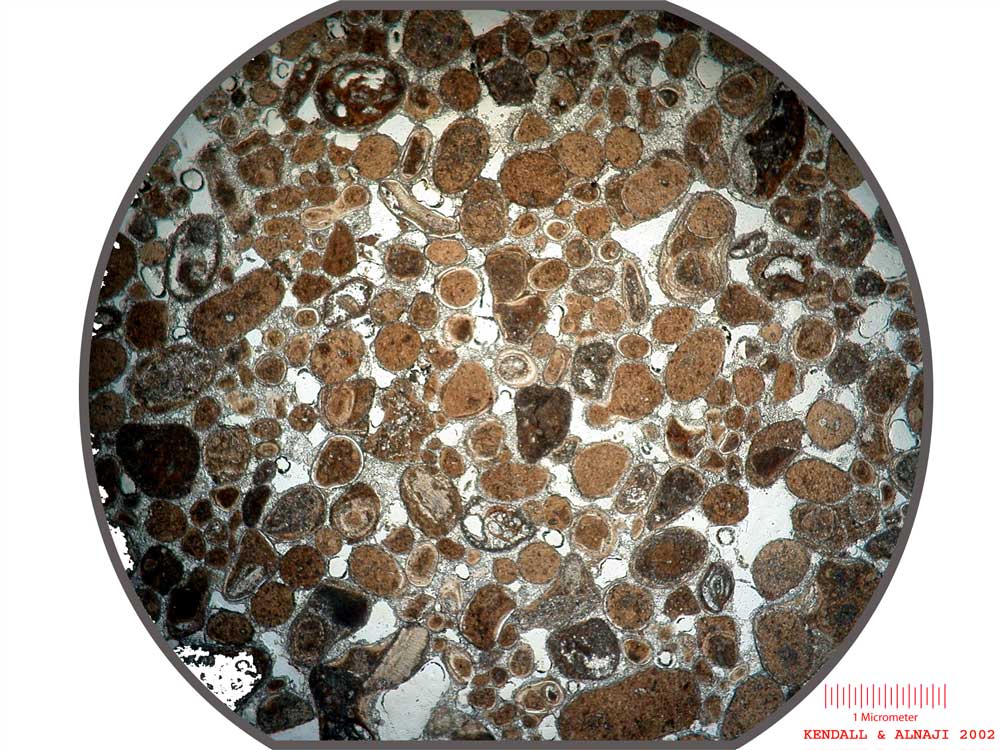 2.5x
|
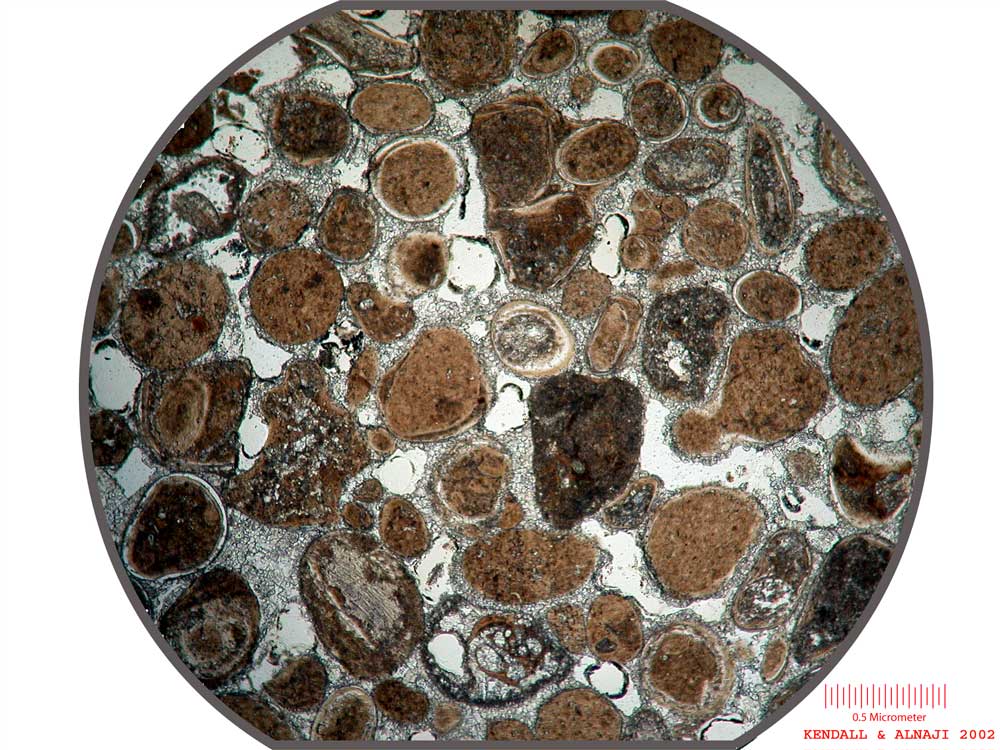 5x
|
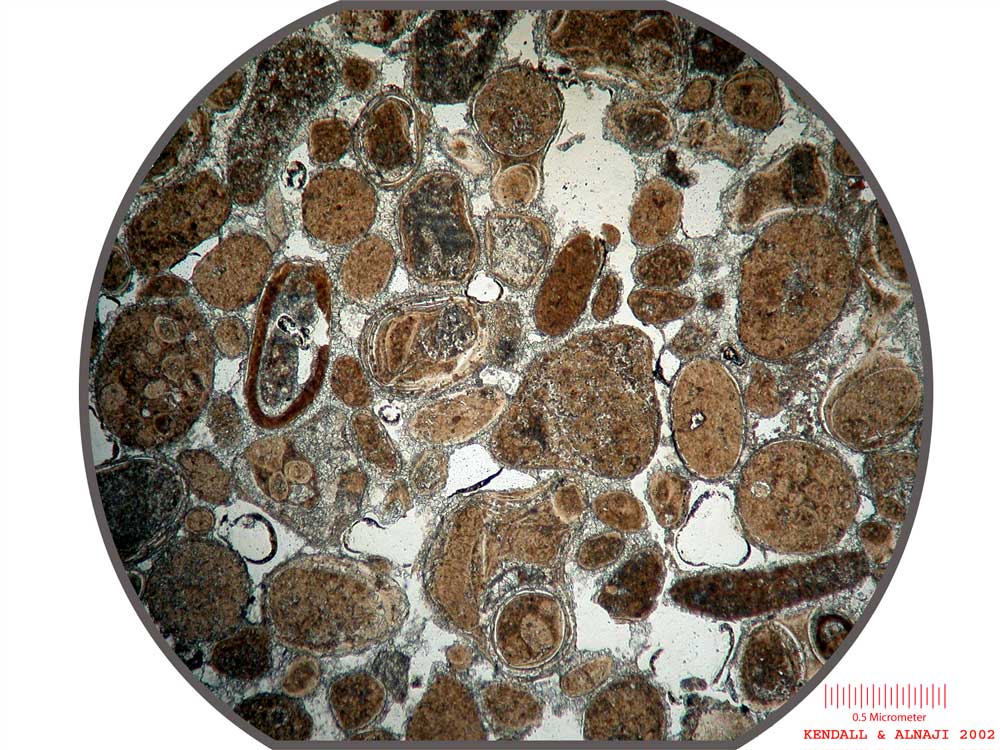 5x
|
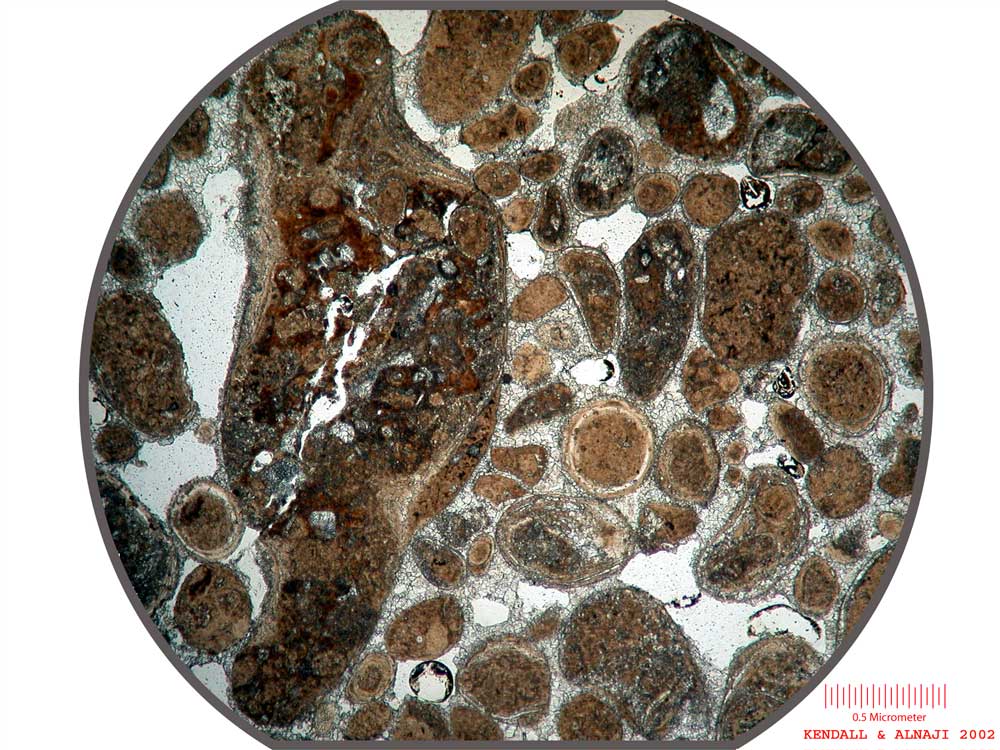 5x
|
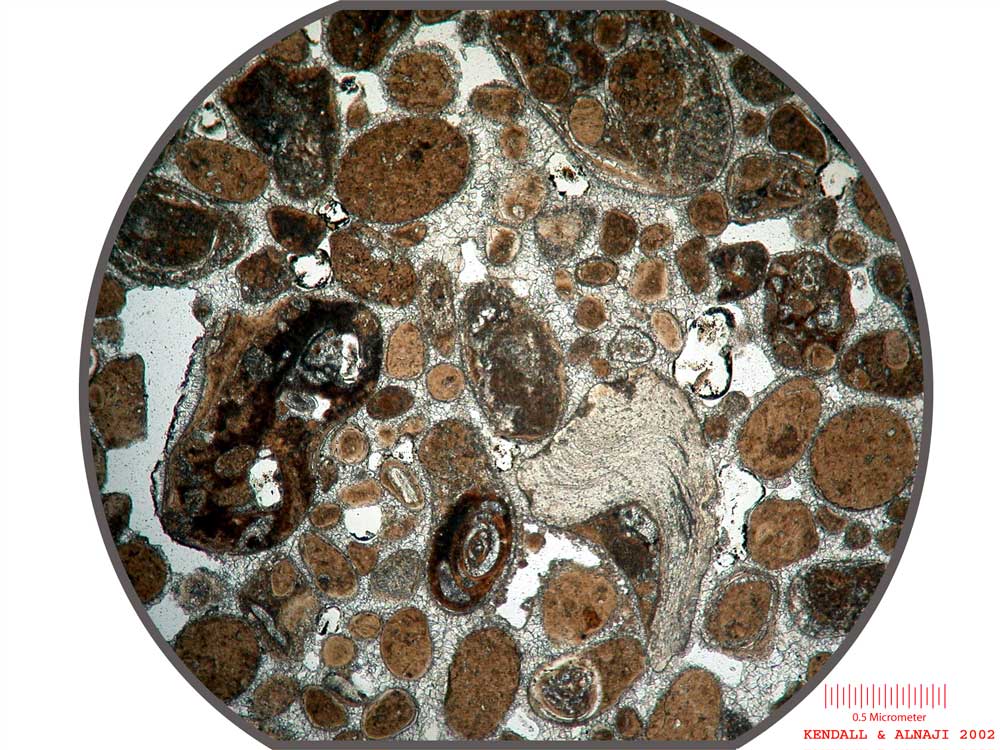 5x
|
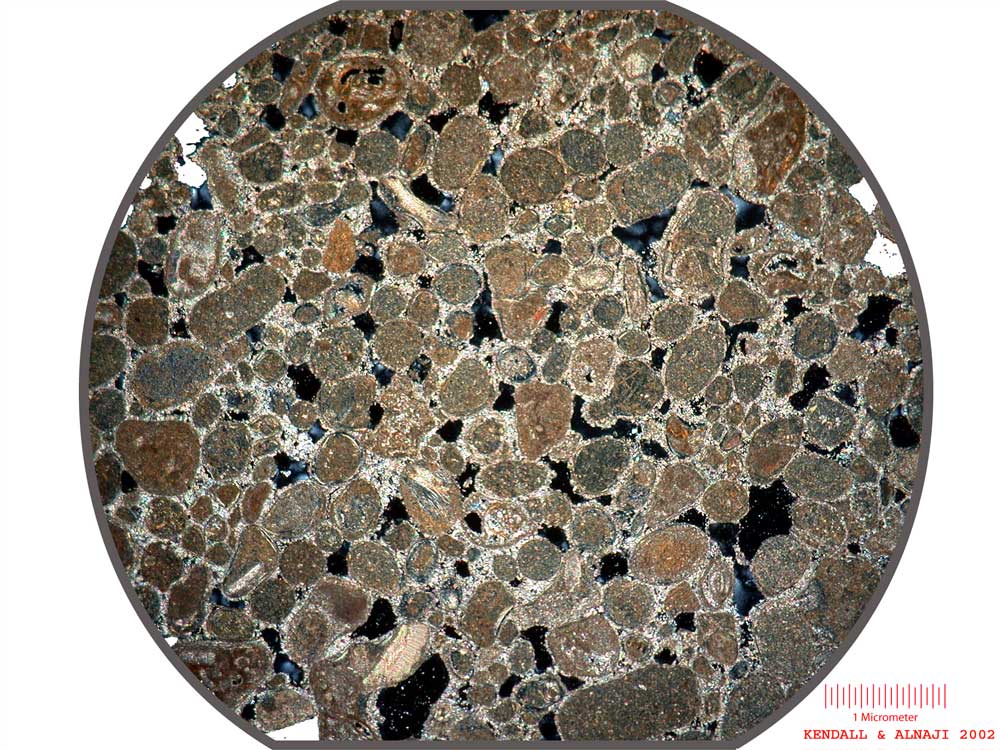 2.5 cross nicols
|
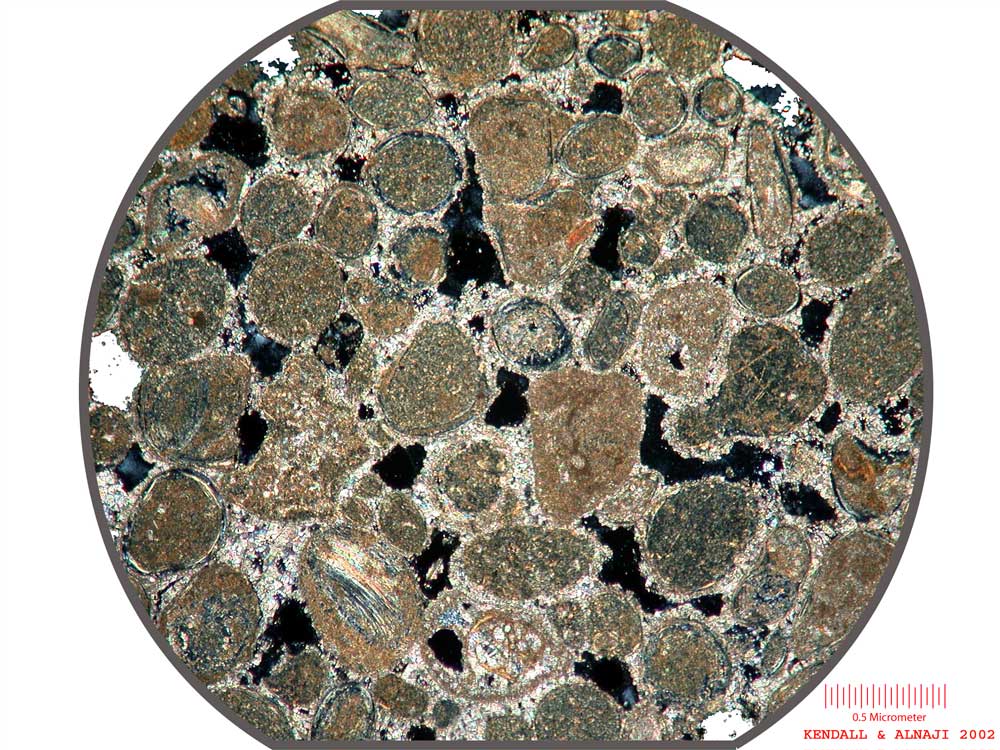 5x cross nicol
|
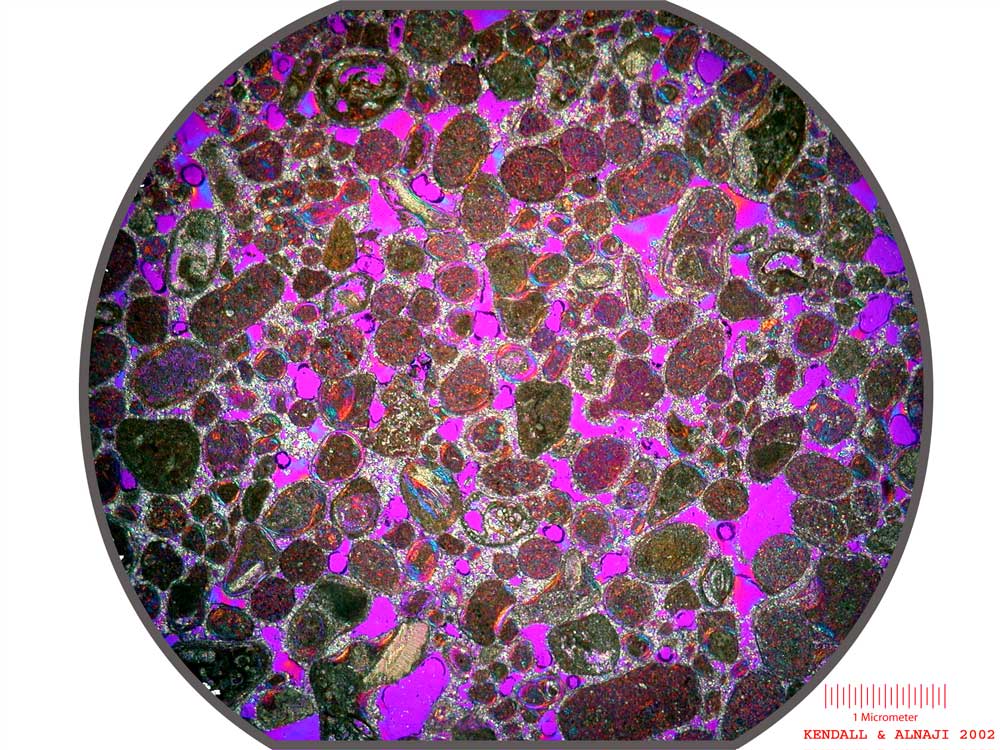 2.5 wave plate
|
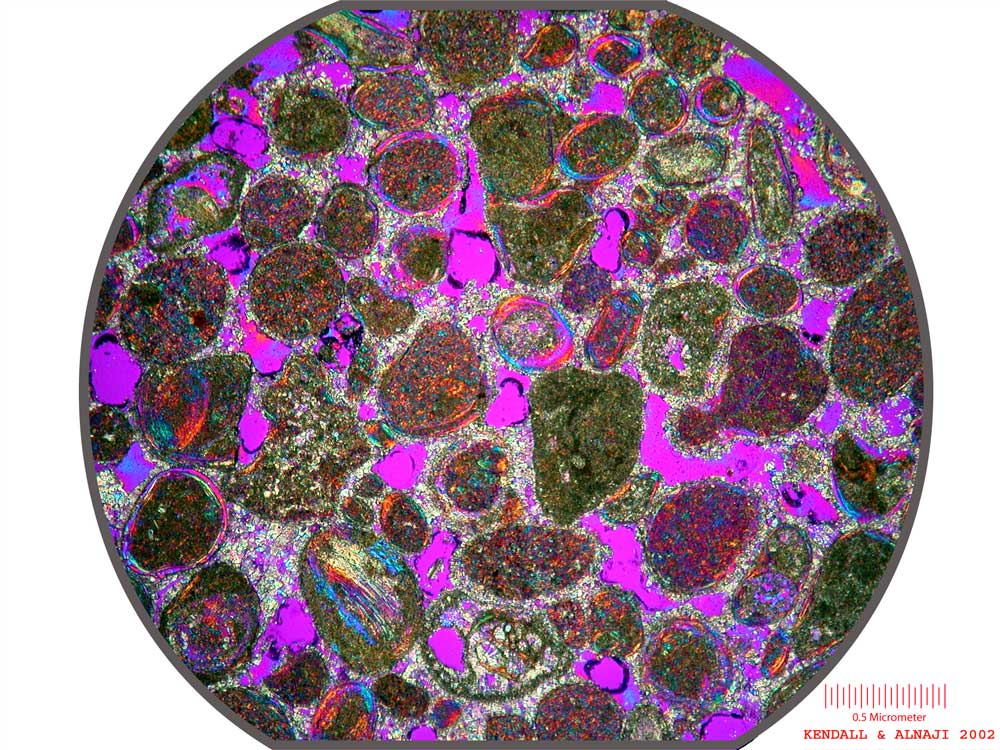 5x wave plate
|
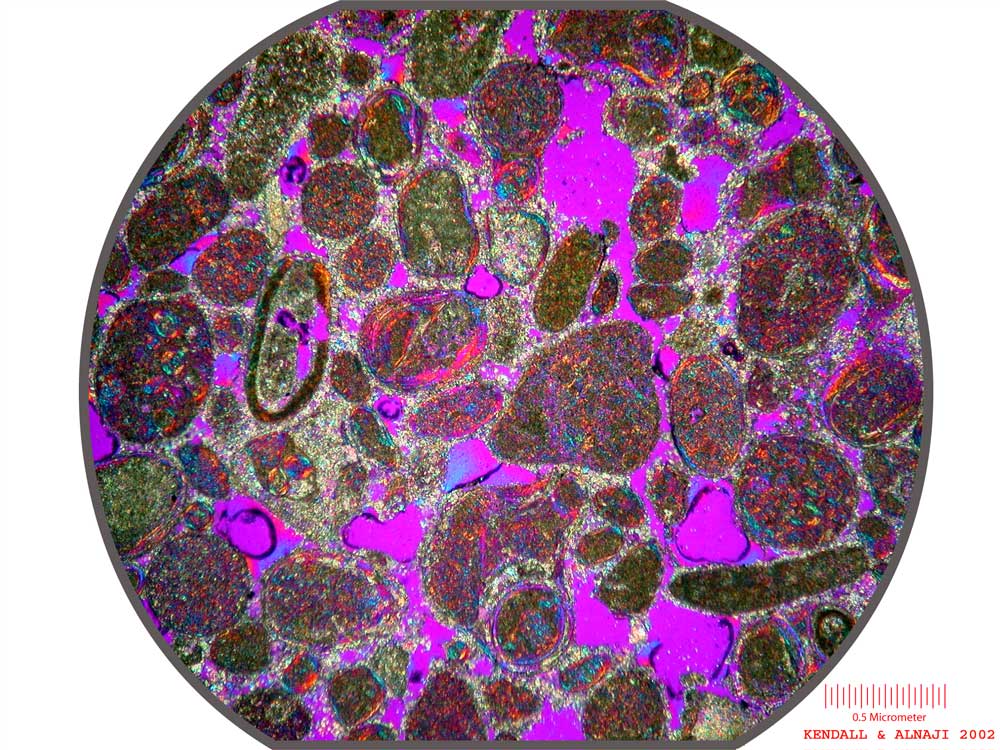 5x wave plate
|
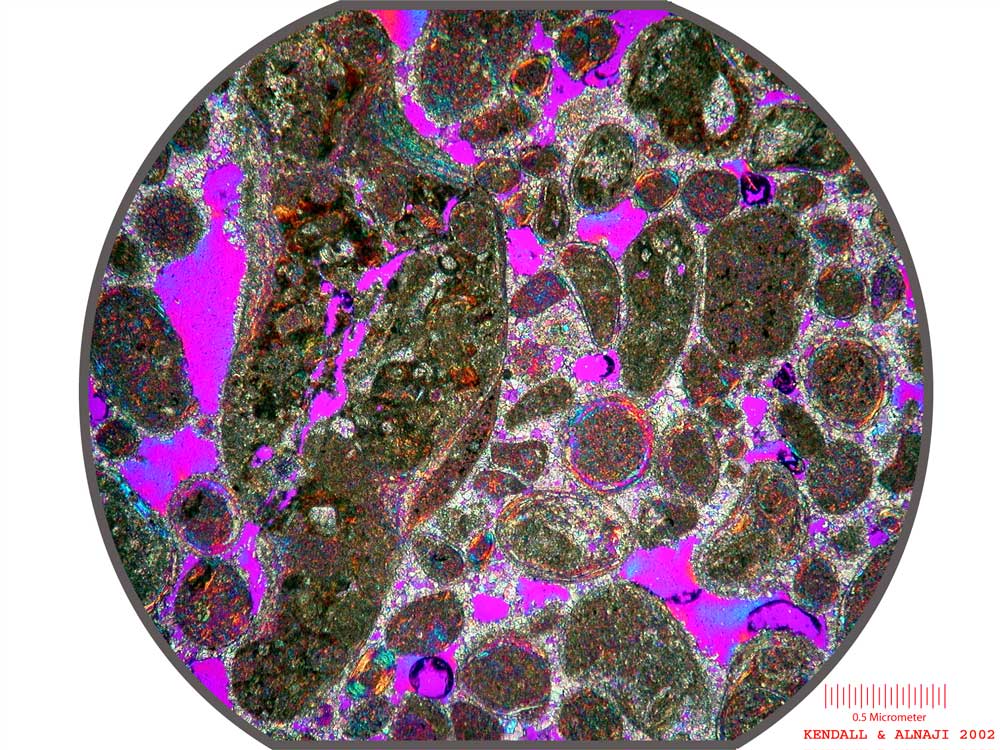 5x wave plate
|
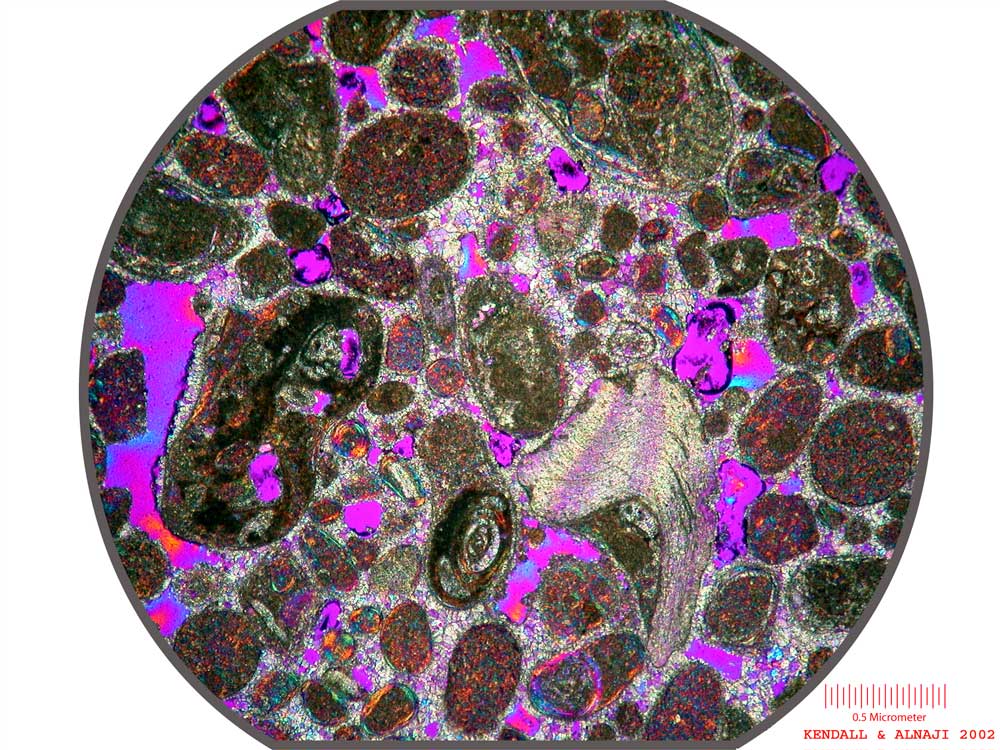 5x wave plate
|
| Outstanding feature |
Meniscus cements & concentric aragonite ooids with thin coats & micritized nucleae |
| Folk Classification |
Oosparite |
| Dunham Classification |
Oolitic Grainstone |
| Common Grains |
Ooids, & botryoidal grapestones |
| Sorting |
Well sorted |
| Rounding |
Well rounded |
| Micritization & envelopes |
Micritized nucleae, often earlier ooids & botryoidal grains |
| Cement & diagenetic fabric |
Meniscus low magnesian calcite rims and equant spar fill |
| Porosity |
30% Interparticle porosity |
| Depositional Setting |
Subaerial dunes formed after exposure of an open marine high energy shelf |
| Diagenetic history |
Cemented by vadose freshwater calcite leached from the original aragonite grains |
The striking meniscus cements are related to evaporation of freshwater charged with dissolved aragonite within these aeolianites. These grains formed on an exposed carbonate shelf and were transported by the wind to their current postion. These aragonite ooids have thin concentric layering of cortex about micritized pelloid nulceae (some after ooids). Botryoidal grains are transported grapestones that form nucleae and are enclosed by aragonite ooid coating. Darkened spots within ooid layers are cyanobacteria colonies that cause local micritization.
Thursday, November 11, 2021